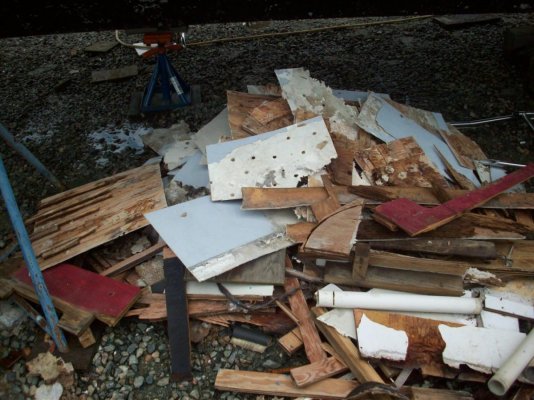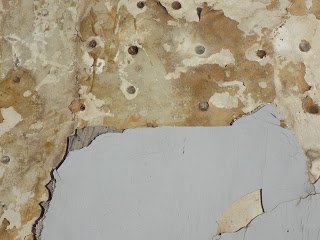"FF ,I am definitely not liking that idea. Have you actually ever done this or seen this done? I can't visualize how you would deal with the existing deck hardware. Build your new deck around it??? If the decks are leaking around the railings or cleats or deck fittings (which they probably are) you're still going to be getting water intrusion getting into the original deck. The water is going to keep on doing damage. Plus, it'll KILL the resale value.
If the boat is a keeper, just fix the dang thing like it's supposed to be fixed."
Yes I have seen it done here at my place in FL.I glassed the deck .
It is fast and although labor intensive only requires one skilled worker , and a grunt helper.
Outside nice weather is a big help. FL winter is dry season.
The concept is to create a structural repair , not just a patch job that may or may not work.
ALL deck hardware is removed , cleats ,windlass, fuel- water fills stanchons and the lay up extends to the hull, in order to have structural strength.
After completion hardware is re installed for a foam cored deck , a different technique than used for a ply deck with glass overlay.
The value will go up not down as the boat now has structural integrity
, however this change will not add enough to the structure of the vessel so it can go offshore, unless it was designed as a voyager and deck rot was the only problem.
It only gets pri$y if the owner "upgrades" to a new windlass , bigger cleats Etc , although Treadmaster IS expensive.
In the past I have described an epoxy / coarse mosquito netlow cost no skid ,probably in the archives.


